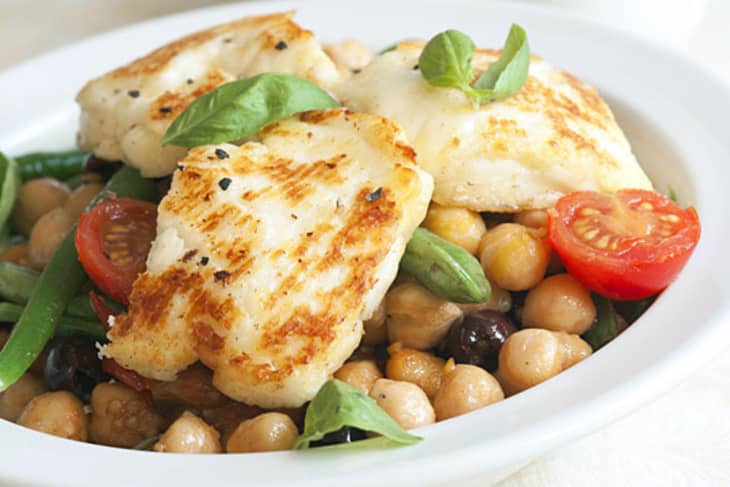Cheese on the Grill! Halloumi
Grilling cheese seems like a magic trick. You keep expecting the slices of halloumi to start melting between the grates and then…they don’t! Instead, this creamy, chewy, mild cheese picks up beautiful grill marks and a touch of smoky flavor. Grillers, say hello to your new favorite ingredient this summer.
Halloumi is traditionally made with either with sheep’s milk or a blend of sheep’s and goat’s milk, but as it’s grown in popularity outside Greece and the Middle East, cow’s milk halloumi has become more common. Like mozzarella, it is made with rennet and usually cured in a brine solution for anywhere from a few days to a few months.
The cheese picks up its non-melting, grillable super powers when the curds are cooked before shaping and brining. This cooking also gives halloumi a stretchy, chewy texture. You can certainly eat the cheese as is, but it will become softer and creamier when cooked.
In flavor, halloumi is similar to many other fresh milk cheeses like mozzarella,
paneer
Grill slices directly over on the grates of a gas or charcoal grill, or skewer cubes for kebabs. You can also cook halloumi on the stove top with a cast-iron grill pan or fry it in a little oil. The halloumi is ready to eat as soon as it’s turned golden.
You’ll find halloumi at Middle Eastern markets or stores with a good selection of Middle Eastern foods. Whole Foods and other gourmet grocery stores have also started carrying it in recent years.
What do you make with halloumi?
Related:
Vegetarian Skewers Five Ways
(Image: Martin Turzak/Shutterstock)
